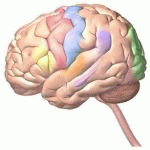Neurology
|
19 december 2014 03:17:05 |
| A survey of stakeholder perspectives on exoskeleton technology (Journal of NeuroEngineering and Rehabilitation) |
|
Tweet Background:
Exoskeleton technology has potential benefits for wheelchair users` health and mobility. However, there are practical barriers to their everyday use as a mobility device. To further understand potential exoskeleton use, and facilitate the development of new technologies, a study was undertaken to explore perspectives of wheelchair users and healthcare professionals on reasons for use of exoskeleton technology, and the importance of a variety of device characteristics.
Methods:
An online survey with quantitative and qualitative components was conducted with wheelchair users and healthcare professionals working directly with individuals with mobility impairments. Respondents rated whether they would use or recommend an exoskeleton for four potential reasons. Seventeen design features were rated and compared in terms of their importance. An exploratory factor analysis was conducted to categorize the 17 design features into meaningful groupings. Content analysis was used to identify themes for the open ended questions regarding reasons for use of an exoskeleton.
Results:
481 survey responses were analyzed, 354 from wheelchair users and 127 from healthcare professionals. The most highly rated reason for potential use or recommendation of an exoskeleton was health benefits. Of the 17 design features, 4 had a median rating of very important: minimization of falls risk, comfort, repair and maintenance cost, and purchase cost. Factor analysis identified two main categories of design features: Functional Activities and Technology Characteristics. Qualitative findings indicated that health and physical benefits, use for activity and access reasons, and psychosocial benefits were important considerations in whether to use or recommend an exoskeleton.
Conclusions:
This study emphasizes the importance of developing future exoskeletons that are comfortable, affordable, minimize fall risk, and enable functional activities. Findings from this study can be utilized to inform the priorities for future development of this technology. |
| 78 viewsCategory: Neurology |
 Interferon-ß-related tumefactive brain lesion in a Caucasian patient with neuromyelitis optica and clinical stabilization with tocilizumab (BMC Neurology) Interferon-ß-related tumefactive brain lesion in a Caucasian patient with neuromyelitis optica and clinical stabilization with tocilizumab (BMC Neurology)Recurrent posterior circulation infarction caused by anomalous occipital bony process in a young patient (BMC Neurology) 
|
| blog comments powered by Disqus |
MyJournals.org
The latest issues of all your favorite science journals on one page
The latest issues of all your favorite science journals on one page



